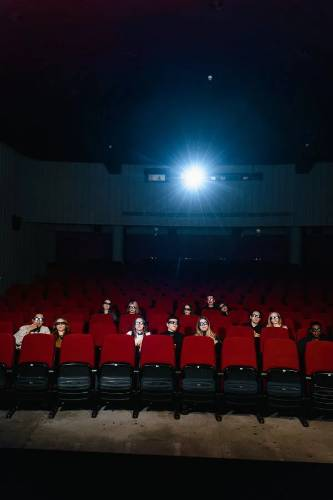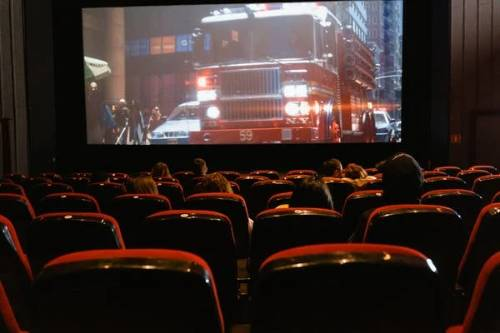Through the use of radio frequency (RF) signals transmitted over coaxial cables or, more recently, light pulses transmitted over fiber-optic cables, cable television brings television programming to viewers’ homes. This is in contrast to broadcast TV (also called terrestrial TV), in which the signal is sent via radio waves and picked up by an antenna connected to the TV, and you can watch cable TV movies, or satellite TV, in which the signal is sent via radio waves from a communications satellite orbiting the Earth and picked up by a satellite dish antenna on the roof.
Through these links, you might be able to get services other than TV, like FM radio broadcasts, high-speed Internet access, and phone lines. The twentieth century saw the widespread use of analog television sets, while the new millennium has seen the rise of digital cable systems.
A “cable channel” (or “cable TV movie”) is a television channel that may be viewed via cable. This is called a “satellite channel” when seen on a satellite TV service like DirecTV or Dish Network or an IPTV service like Verizon FIOS or U-verse TV. The term “programming service” is more commonly used in a legal context, however the term “non-broadcast channel” is also in use. In the United States, “CATV” is often used as a shorthand for cable TV. CTV stands for Community Access Television or Community Antenna Television, which were the original names for cable TV. The term has its roots in 1948, when large “community antennas” were built in areas where over-the-air TV reception was poor due to transmitter distance or mountainous terrain, and cable was then run from these antennas to individual homes.
The movies that kept cable alive
You are not losing your mind. Every time you change the channel, there’s a good chance that you’ll see “Road House,” the 1989 film starring Patrick Swayze. Movies like “Ghostbusters,” “Friday,” “50 First Dates,” “Jumanji,” “Legally Blonde,” “A Few Good Men,” and dozens more transcend age and time with consistently high box office returns.
Movies from the ’80s, ’90s, and early ’00s tend to do well on ad-supported television. The repeat of “Independence Day” on AMC or TNT is predicted to draw between 300,000 and 500,000 people regardless of the daypart, despite the ubiquitous availability of movies in commercial-free, unedited, and on-demand versions.
Film veterans say movies work as “flypaper,” drawing in audiences with their familiarity. Someone who has seen “Pretty Woman” or “The Shawshank Redemption” may stroll in at any time and quote nearly the whole movie to watch with family members face to face.
At least one commercial break may be justified by the average audience’s attention span, which is 17 to 20 minutes for a two-hour film. According to Ken Werner, the former CEO of Warner Bros.
When it comes to watching movies on commercial television, “it’s the antithesis of appointment viewing—it’s collision viewing.” The audience is getting exactly what they want from you. You might make them laugh for a split second, but it won’t last.
The criteria for motion pictures
Popular films can now be shown on many networks at once, usually within a matter of months, because of the relaxation of licensing requirements in recent years. In the past, cable companies would lock into four-year or longer licensing deals for massive film packages from the major studios. These days, companies like Warner Bros. and others only license a few titles for a short period of time. Studio profits go up, while cable companies save money and reduce their storage needs.

Since the “recommended for you” algorithm was put in place, basic cable companies have included movie air times in their recommendations. Popular names are often used as a tease before the premiere of new programs. In 2002, FX launched “The Shield,” a police drama based on the 1991 blockbuster “Terminator 2: Judgment Day,” after airing the picture as a springboard for Sylvester Stallone, the former president.
Movies of yesteryear have a huge effect on society
FX Networks president and COO Chuck Saftler, who also served as the group’s head of scheduling for many years, has said that the film “Terminator 2” taught him everything he needed to know about the incredible power of beloved films and how to match demographic appeal to what we’re attempting to launch to ensure that the audience sees the show. Since most people watch movies on cable today in real time, commercials and promotions have never been more successful than tv series of same name.
It’s essentially flypaper for cinema. Saftler said this is because “people tend to remain longer than intended.” You have a great chance to plan a lot of time and promote other events when you have a two-hour strip of flypaper where people just land and stick. Advertisements are more effective when seen live rather than recorded.
Cable TV movies: Disadvantages and benefits
A membership to a cable TV service comes with a variety of advantages as well as a few disadvantages. Just like any other subject, this one may be approached from a variety of vantage points. There is a possibility that the cost will discourage some customers. Others, on the other hand, decide to keep their subscriptions current in spite of the discounted package deal that is being provided to them because they are interested in continuing to watch live sports. It is not possible to know for definite how the outcomes of these considerations will affect the decision to terminate physical comedy.
